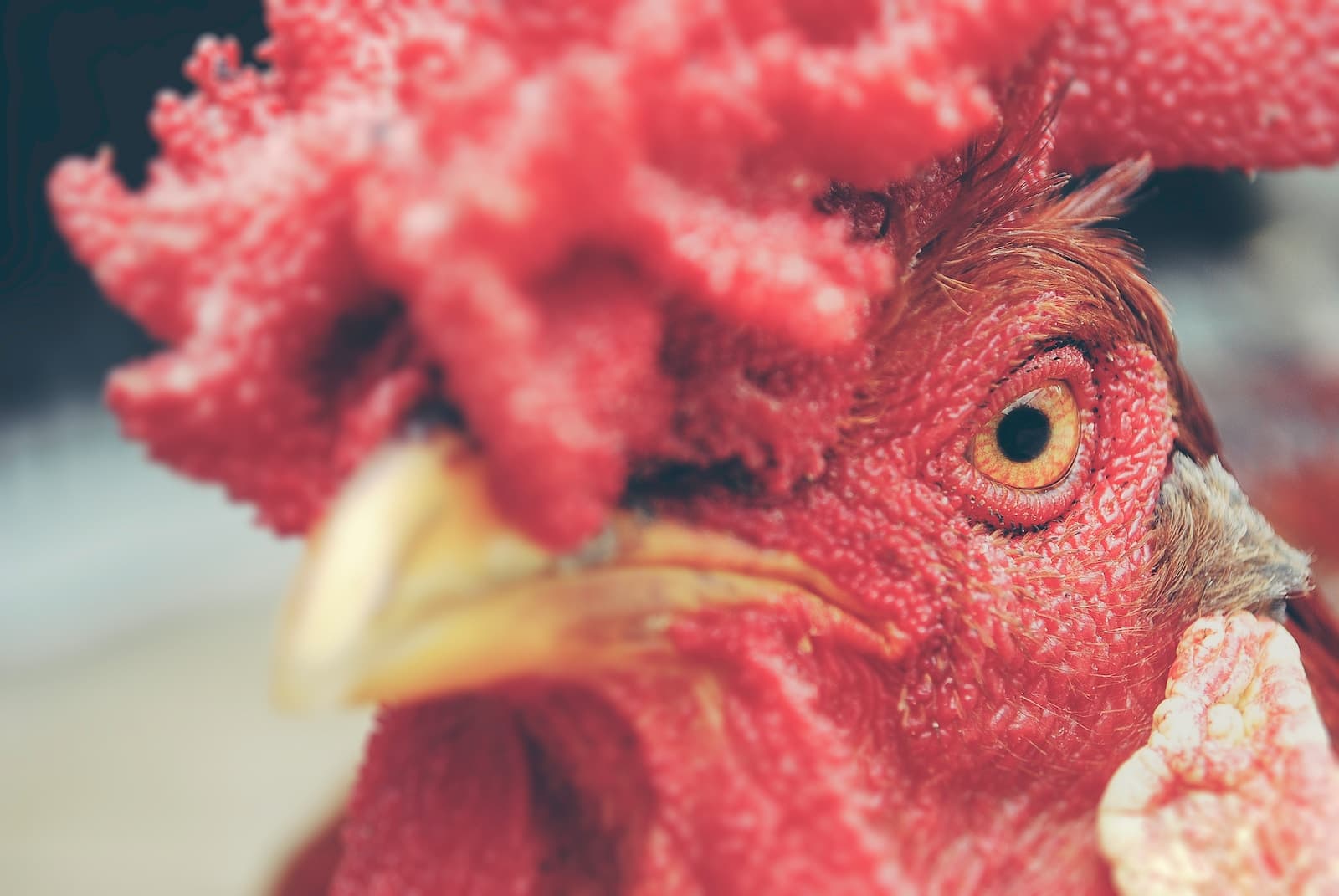Chicken breeding is all about mixing genes to make chickens with certain looks or skills. It’s like a recipe where you know what ingredients will give you the perfect chicken. Breeders want their baby chicks to grow up looking and acting like their parents.
Each chick gets half of its gene puzzle from mom and half from dad, just like people do.
Breeders have tricks for picking the best birds so that they get the traits they want in their flocks. They need to understand how chicken genes work before starting this process. This includes learning about things like wing bands to tell young birds apart and special ways to know if a chick is a boy or girl right away.
By knowing more about chicken genes, breeders can help keep chickens healthy and even control things like what color feathers they have! Let’s find out how breeders use science to create amazing chickens.
Keep reading to see how it all works!
The Role of Genetics in Chicken Breeding
Understanding inheritance patterns and selective breeding is crucial for breeders to produce chickens with desirable traits. By studying genetics, breeders can make informed decisions about mating pairs to ensure the next generation carries the desired genetic material.
Understanding Inheritance Patterns
Inheritance patterns show how traits pass from parents to offspring. Chickens get half their DNA from each parent, which includes genes for things like feather color and comb type.
Some traits are strong and always show up when the gene is there; these are called dominant. Other traits can hide when a dominant trait is around; these are recessive.
Breeders use inheritance patterns to make chickens with the features they want by choosing which roosters and hens to pair up. For example, if you cross two chickens with a certain feature that breeds true, you’ll get more chicks with that same feature.
This way, breeders can make sure their chickens have special colors or good health by knowing what hidden traits the birds might carry.
Selective Breeding and Trait Selection
Breeders choose chickens with the best traits to have babies together. This is called selective breeding. They look for things like big size, nice feather color, or how many eggs a hen lays.
Using this method helps make sure the chicks grow up with these good traits too.
People use what they know about chicken genes to pick which ones should be parents. When two chickens have babies, each one gives half of its DNA to its chicks. So, if you breed two chickens that both lay lots of eggs, their chick will likely lay lots of eggs as well.
Next is “Gene Table and Breeding Basics”.
Key Genetic Concepts in Poultry
Understanding the gene table and breeding basics is crucial for poultry breeders to effectively manage genetic traits. Additionally, learning about sex chromosomes in chickens (Z and W) will provide a deeper understanding of inheritance patterns and trait selection in poultry breeding.
Gene Table and Breeding Basics
Poultry genetics play a crucial role in chicken breeding programs. Breeders utilize gene tables to predict the likelihood of specific traits appearing in offspring. Here’s a simplified gene table to illustrate breeding basics:
| Trait | Gene Symbol | Dominant Allele | Recessive Allele | Expression in Offspring |
|---|---|---|---|---|
| Feather Color | F | F (Black) | f (White) | Black dominates white |
| Comb Type | C | C (Single) | c (Rose) | Single comb is dominant |
| Egg Shell Color | E | E (Brown) | e (White) | Brown shells are dominant |
| Feather Pattern | P | P (Patterned) | p (Solid) | Patterned feathers are dominant |
This table signifies how different traits are inherited. Dominant alleles overshadow recessive alleles, thereby determining the expression in progeny. For instance, crossing a black feathered chicken (FF or Ff) with a white feathered chicken (ff) will result in black feathered offspring due to black being the dominant trait.
Selective breeding practices hinge on this genetic knowledge. Breeders will often choose parents with dominant traits they wish to propagate within the flock. Given that chickens inherit 50% of their DNA from each parent, this selection process increases the chance of desired characteristics.
Gene combinations in the offspring can be predicted by applying Mendelian genetics. Each parent contributes one allele for every gene, which pair up in the offspring to form the genetic basis for their traits.
Sex chromosomes also bear weight in the breeding process, with male chickens having two Z chromosomes and females having one Z and one W. This difference can be used for sex-linked traits and autosexing, simplifying the identification of chick genders at hatching.
Wing or leg bands serve as identifiers for the chicks in a breeding program. These help track which offspring inherited particular traits, ensuring the lineage is clear.
In essence, a breeder’s understanding of gene tables and basic genetics is a foundational aspect of any successful breeding program. It equips them to produce chickens with specific traits, such as certain comb types or feather colors, through informed selection and mating strategies.
Sex Chromosomes in Chickens: Z and W
Chickens have sex chromosomes just like humans. Male chickens have two sex chromosomes, referred to as ZZ, while hens only have one and it’s called ZW. Like humans, chickens also inherit 50% of their DNA from each parent.
Understanding the role of Z and W chromosomes in chicken genetics is crucial for breeders looking to create specific traits within their flocks. By grasping the basics of how these sex-linked genes work, breeders can utilize sex linkage and autosexing to achieve desired genetic traits in their poultry breeding programs.
Understanding the difference between ZZ and ZW sex chromosomes is essential when aiming for specific characteristics in a breeding program. Utilizing wing or leg bands offers an effective way to identify chicks based on their inherited traits from these different combinations of Z and W chromosomes.
Observable Traits and Their Genetic Basis
Understanding the genetic basis of observable traits in chickens, such as comb type and feather color, is essential for breeders to make informed breeding decisions. By knowing how these traits are inherited, breeders can selectively breed for specific characteristics in their flock.
Comb Type and Feather Color
The comb type and feather color in chickens are determined by genetics.
- Comb Type: The shape and size of the comb is a hereditary trait influenced by gene combinations.
- Pea Combs: This type of comb is determined by a dominant gene, resulting in a compact and small comb.
- Single Combs: Controlled by a different set of genes, single combed chickens have a characteristic upright and elongated comb.
- Feather Color: The color of feathers is also genetically controlled, with various genes responsible for different shades and patterns.
- Melanin Production: Genes regulating melanin production determine the darkness or lightness of feather colors.
- Pigment Distribution: The distribution of pigment in feathers is influenced by genetic instructions inherited from the parents.
- Role of Sex Chromosomes: Some feather colors are linked to sex chromosomes, affecting how certain colors appear in male and female chickens.
- Crossbreeding Effects: Crossbreeding can lead to new combinations of genetic traits that produce unique feather color patterns.
The Genetics of Chicken Colors
Chicken colors are determined by specific genes that control the production of pigments in their feathers. The main pigment-producing cells, called melanocytes, impact the overall feather color and pattern.
For instance, the silver gene influences whether a chicken’s feathers are black or white. Additionally, other genes such as those responsible for eye color can affect the overall appearance of a chicken.
Understanding these genetic principles can help breeders selectively develop desirable color patterns and characteristics in their flocks while avoiding unwanted traits.
The combination of different genes determines the distribution of pigments throughout a chicken’s feathers, resulting in various patterns and hues. Through selective breeding based on these genetic factors, breeders can work towards producing chickens with specific and desired appearances.
The Role of Probiotics in Chicken Health and Genetic Expression
Probiotics play a vital role in chicken health and genetic expression by promoting a balanced gut microbiome. This balance positively influences the genetic expression of desirable traits, such as improved growth and disease resistance in poultry.
Additionally, probiotics aid in nutrient absorption, which can enhance overall health and the expression of genetic potential in chickens.
Probiotics facilitate a healthy gut environment that supports optimal genetic expression by aiding digestion and boosting immunity. This contributes to better overall health and enhanced expression of desired genetic traits in chickens.
Conclusion
In conclusion, understanding chicken genetics is vital for breeders. This knowledge allows for the selection and breeding of chickens with specific traits. By utilizing sex linkage and autosexing, breeders can efficiently achieve desired genetic traits in poultry.
Have you considered how these strategies could positively impact your breeding program? The potential improvements by applying these approaches are significant. Take the first step in mastering poultry genetics today!
Discover how probiotics play an essential role in the health and genetic vitality of your flock by clicking here.
FAQs
1. What do chicken breeders mean by “phenotype”?
Phenotype is how a chicken looks, including its feathers and egg color. It’s what you see because of the bird’s genes.
2. Can you explain what ‘homozygous’ means?
Homozygous means that both genes from a chicken’s mom and dad are the same for a trait, like if both genes say the feathers will be white.
3. Why do some chickens look different from their brothers and sisters?
Chickens might look different from their siblings when they have mixed or ‘heterozygous’ genes, carrying two different types like one for red feathers and one for white.
4. What is sex-linked inheritance in chickens?
Sex-linked inheritance happens when certain traits are tied to the sex-chromosomes, which decide if a baby chick will be male or female.
5. How can breeders use Punnett squares with chickens?
Breeders use Punnett squares to guess what baby chicks might look like based on what genes their parents carry for things like feather color.
6. Does inbreeding affect chicken genetics?
Yes! Inbreeding, where close relatives mate, can cause more babies to get two copies of recessive genes which might lead to problems or changes in how they look or act.

